February 2, 2008


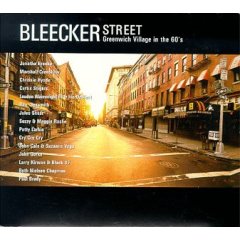 Various Artists
Bleecker Street: Greenwich Village In The 60's
To a fan of folk and folk-rock music like me, this is a rare, and little-known, treasure. It came out a few years ago and I came across it at a Borders bookstore. It’s a compilation of ‘60s urban folk-era remade by contemporary singer-songwriters, and though some of the covers are reverential and dry, some are really fresh takes on these songs, all of which I’ve known for decades. My favorites include Jonatha Brookes’ crystalline, haunting take of Paul Simon’s haunting “Bleecker Street,†the tribute to the first folk era’s ground zero in Greenwich Village, from Simon and Garfunkel’s debut album. Another favorite is Loudon Wainwright III and Iris DeMent’s rollicking “Pack Up Your Sorrows,†which led me back to Richard and Mimi Farina’s greatest hits album, where the original still glows, and Cry Cry Cry’s beautiful version of Tom Paxton’s deeply moving “Last Thing on My Mind.†Droll baritone folkie John Gorka tackles Eric Andersen’s “Thirsty Boots,†John Cale and Suzanne Vega (!) wrap themselves around Leonard Cohen’s â€So Log Marianne†and Larry Kirwan of the NYC Irish rockers Black 47 revs up Phil Och’s still-relevant anti-war rant, “I Ain’t Marchin’ Anymore.†Yeah, I like everything on the disc, and I’ve turned many souls onto this disc.
Various Artists
Bleecker Street: Greenwich Village In The 60's
To a fan of folk and folk-rock music like me, this is a rare, and little-known, treasure. It came out a few years ago and I came across it at a Borders bookstore. It’s a compilation of ‘60s urban folk-era remade by contemporary singer-songwriters, and though some of the covers are reverential and dry, some are really fresh takes on these songs, all of which I’ve known for decades. My favorites include Jonatha Brookes’ crystalline, haunting take of Paul Simon’s haunting “Bleecker Street,†the tribute to the first folk era’s ground zero in Greenwich Village, from Simon and Garfunkel’s debut album. Another favorite is Loudon Wainwright III and Iris DeMent’s rollicking “Pack Up Your Sorrows,†which led me back to Richard and Mimi Farina’s greatest hits album, where the original still glows, and Cry Cry Cry’s beautiful version of Tom Paxton’s deeply moving “Last Thing on My Mind.†Droll baritone folkie John Gorka tackles Eric Andersen’s “Thirsty Boots,†John Cale and Suzanne Vega (!) wrap themselves around Leonard Cohen’s â€So Log Marianne†and Larry Kirwan of the NYC Irish rockers Black 47 revs up Phil Och’s still-relevant anti-war rant, “I Ain’t Marchin’ Anymore.†Yeah, I like everything on the disc, and I’ve turned many souls onto this disc.
 Michaela Conlin as Angela Montenegro and Emily Deschanel as Dr. Temperance Brennan in "Bones." Michaela Conlin as Angela Montenegro and Emily Deschanel as Dr. Temperance Brennan in "Bones." |
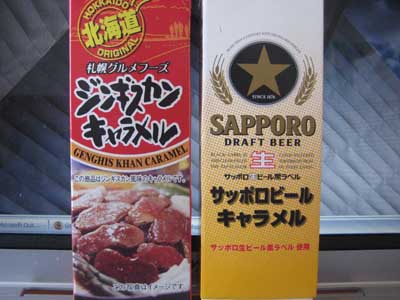
In the U.S., snack food manufacturers in recent years have become creative, and come up with a variety of flavor combinations beyond the old barbecue-flavor potato chips or the nacho cheese flavored Doritos. Now you can get black pepper and olive oil Triscuits, or chili-lime flavored corn chips. But American palates probably aren't ready for some of the flavors that are available in Japan.
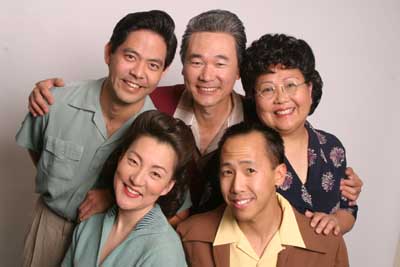 Members of the Grateful Crane Ensemble's "Moonlight Serenaders" in "The Camp Dance: The Music & The Memories," include (front row) Keiko Kawashima and Jason Fong; (back row) Kurt Kuniyoshi, Darrell Kunitomi and Haruye Ioka. (Photo by Phil Nee) |
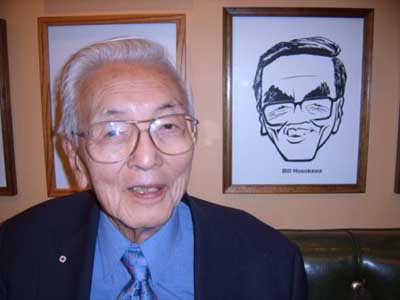 Bill Hosokawa in 2005, sitting next to a caricature at the Denver Press Club Bill Hosokawa in 2005, sitting next to a caricature at the Denver Press Club |
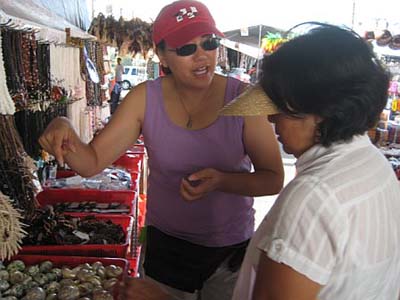 We ended the week with a flurry of shopping at the famous Flea Market at Aloha Stadium. We ended the week with a flurry of shopping at the famous Flea Market at Aloha Stadium. |
This website uses cookies to improve your experience. We'll assume you're ok with this, but you can opt-out if you wish. Read More


